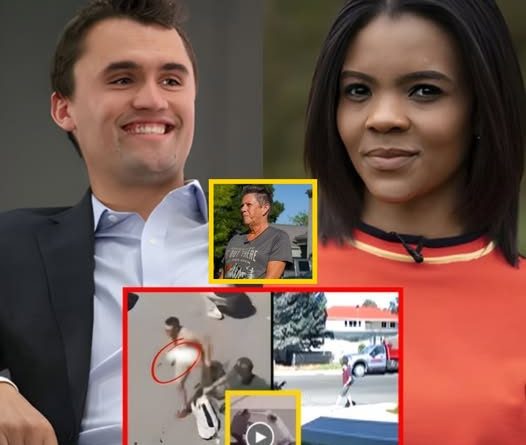New Viral Clip: Millions Are Rewatching the 12-Second Moment Everyone Can’t Look Away From — Candace Owens Says, ‘Everything We Thought Was Wrong’ — Experts Stunned by the Viral Footage
New Viral Clip: Millions Are Rewatching the 12-Second Moment Everyone Can’t Look Away From — Candace Owens Says, ‘Everything We Thought Was Wrong’ — Experts Stunned by the Viral Footage.
The world paused when news of Charlie Kirk’s collapse first hit the headlines. Footage of the incident spread across social media almost instantly, with millions of viewers watching in disbelief as the prominent political commentator suddenly fell during what appeared to be a routine public appearance. At first glance, the video seemed to confirm initial reports: Kirk had collapsed in the midst of a crowd, and observers naturally assumed a single individual was responsible.
However, as the hours turned into days, a seemingly ordinary 12-second segment of the video began to dominate online discussions. Millions of people returned to the clip, frame by frame, noticing details that had been overlooked in the initial frenzy. Some viewers claimed they saw movement from figures in the background that contradicted the official narrative. Others suggested subtle body language indicated that Kirk’s fall might not have been caused by the man initially blamed. These revelations set off a storm of speculation, leaving even seasoned journalists questioning the original story.
Candace Owens, a familiar figure in political media, became central to this developing narrative. In a statement that quickly went viral, she claimed: “Everything we thought was wrong.” Her assertion added fuel to the online fire, prompting a surge of commentary, debate, and speculation across multiple platforms. The 12-second clip became not just a viral moment, but a focal point for a broader discussion about what truly happened.
Social media users began dissecting every frame of the video, analyzing movements, shadows, and angles. Every detail was scrutinized—how Kirk’s feet moved before he fell, the positioning of surrounding individuals, even the glances exchanged in the crowd. Experts in body mechanics and video forensics were called upon by online communities to interpret what they were seeing. This unprecedented focus on a brief moment in time reflected a growing mistrust of the initial reports and an appetite for deeper investigation.
Meanwhile, Tyler Robinson, the man initially accused of causing Kirk’s collapse, became an unintended center of public attention. Discussions about his alleged involvement swirled online, and the new analysis sparked by Owens’ statement forced many to reconsider the fairness of the accusations. Could Robinson have been falsely accused? Could the video evidence, when scrutinized in slow motion, reveal an entirely different chain of events? These questions began to dominate social media discourse, trending across Twitter, TikTok, and other platforms where the clip circulated relentlessly.
The story had all the elements of a modern viral sensation: intrigue, controversy, and a short, replayable moment that kept people coming back for more. Yet it was more than just entertainment; the implications of the clip, combined with Owens’ claim, posed serious questions about how information is initially reported and interpreted in fast-moving news cycles.
By the end of the first week, the 12-second clip had been shared millions of times, each iteration accompanied by a commentary, a theory, or a challenge to the official narrative. Online forums became dedicated spaces for collective investigation, where amateurs and professionals alike attempted to piece together a timeline from the split-second movements captured on video. Analysts highlighted inconsistencies, prompting heated debate and, in some cases, outright hostility toward those who defended the initial reports.
For many, this moment in history demonstrated the power of collective scrutiny in the age of viral media. No longer could an official report go unchallenged when millions had access to the same footage and the tools to dissect it. The 12-second video became a symbol of how quickly narratives could be reshaped, and how public perception could diverge sharply from initial accounts.
As the world watched and rewatched these fleeting seconds, questions mounted: What really happened during that brief moment? Who, if anyone, was responsible? And why did Candace Owens feel compelled to publicly declare that the official understanding was completely wrong?
